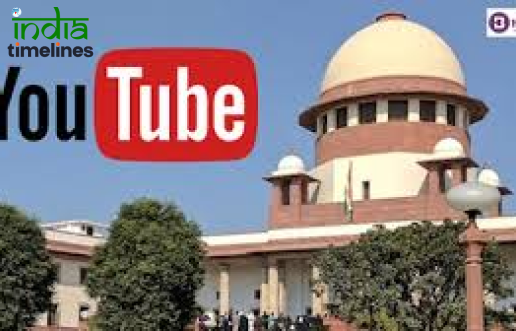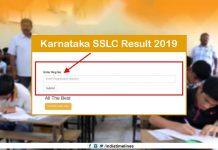
In an age where the digital presence of institutions is as important as their physical operations, the hacking of the official YouTube channel of the Supreme Court has raised serious concerns about cybersecurity vulnerabilities in even the highest pillars of justice. The incident not only highlights the growing menace of cyberattacks but also serves as a reminder that no digital platform is entirely immune from threats, no matter how secure it may seem.
What Happened?
In a shocking turn of events, the official YouTube channel of the Supreme Court of India’s was hacked, leaving thousands of its subscribers and the legal community in disbelief. The hackers replaced official content with inappropriate or unrelated videos, significantly damaging the platform’s credibility. Furthermore, misleading links and content were posted, causing confusion among viewers who expected to access legitimate and important legal resources.
The breach was discovered when subscribers noticed unusual activity on the channel. Videos promoting scams or unrelated content appeared, signaling that the platform had been compromised. While the exact nature of the hack is still under investigation, authorities believe it was a coordinated cyberattack aimed at disrupting the institution’s communication channel.
The Immediate Response
As soon as the breach was identified, the Supreme Court’s IT team, in collaboration with government cybersecurity experts, took immediate action to contain the damage. The YouTube channel was temporarily taken offline to prevent further exploitation, and efforts were made to recover control from the hackers.
A formal statement was issued, assuring the public that no sensitive legal information was compromised. However, the court admitted that this attack highlights vulnerabilities in digital infrastructure, calling for an urgent review of security protocols.
Possible Motives Behind the Attack
The motives behind the hacking of such a high-profile institution’s digital platform remain unclear. Cyber experts suggest several possibilities:
- Disruption: The hackers may have been aiming to disrupt the credibility and operations of a prominent judicial body. By hacking into the Supreme Court’s YouTube channel, they sought to tarnish the image of a trusted institution.
- Cybercriminal Activity: Another possibility is that the attack was financially motivated, using the large subscriber base to promote fraudulent schemes and generate revenue through ad clicks or phishing scams.
- Political Motivation: Given the sensitive nature of judicial institutions, some analysts believe the hack could be politically driven. Cyberattacks can be used to make a statement or to create a sense of instability.
- Test of Vulnerabilities: Sometimes, hackers target high-profile organizations to test the strength of their security systems. This breach could be a wake-up call to the Supreme Court and other institutions to bolster their defenses against more serious cyber threats.
Cybersecurity Challenges for Public Institutions
The hacking of the Supreme Court’s YouTube channel is a stark reminder of the cybersecurity challenges faced by public institutions. As the world becomes increasingly digital, the threat landscape has expanded. Government and public sector organizations are prime targets due to their authority, reach, and influence.
Maintaining secure digital platforms requires continuous monitoring, frequent updates, and the implementation of advanced security measures. Public institutions must invest in cutting-edge technology and cybersecurity training for their staff to prevent such breaches.
The Aftermath and Next Steps
While the immediate threat has been neutralized, the Supreme Court will need to conduct a thorough investigation into the breach to understand how it occurred and ensure that similar incidents do not happen in the future. Experts believe that this hacking incident could lead to a broader review of cybersecurity policies, not just within the judiciary but across various governmental digital platforms.
To regain public trust, the Supreme Court is expected to share transparent findings of their investigation, along with a detailed outline of steps they will take to enhance security. Additionally, collaboration with global cybersecurity experts and organizations will likely become a priority to safeguard the nation’s key institutions.
What Can We Learn?
This incident serves as a critical lesson for both public institutions and private organizations. No digital platform is completely secure from cyber threats, and continuous vigilance is essential. Here are some key takeaways:
- Regular Audits: Conducting regular cybersecurity audits can help detect vulnerabilities early and mitigate the risk of attacks.
- Employee Training: Public institutions must provide extensive cybersecurity training for their employees to prevent inadvertent breaches caused by human error.
- Multi-Layer Security: Implementing multi-layer security protocols such as two-factor authentication (2FA) and encrypted communications can provide an additional barrier against hacking attempts.
- Public Awareness: It is also important to keep the public informed about cybersecurity risks, particularly when dealing with online platforms that require personal information or financial transactions.
Conclusion
The hacking of the Supreme Court’s YouTube channel is a grim reminder of the vulnerability that all digital platforms face. While immediate action has been taken, this incident will undoubtedly spur a deeper focus on cybersecurity within public institutions. In a world increasingly dependent on digital interactions, safeguarding the digital presence of key institutions is not just a technical necessity but a matter of public trust.
As the investigation continues, we can expect a renewed emphasis on strengthening cybersecurity measures across the board to ensure that future attacks are prevented and public faith in digital platforms is restored.

































